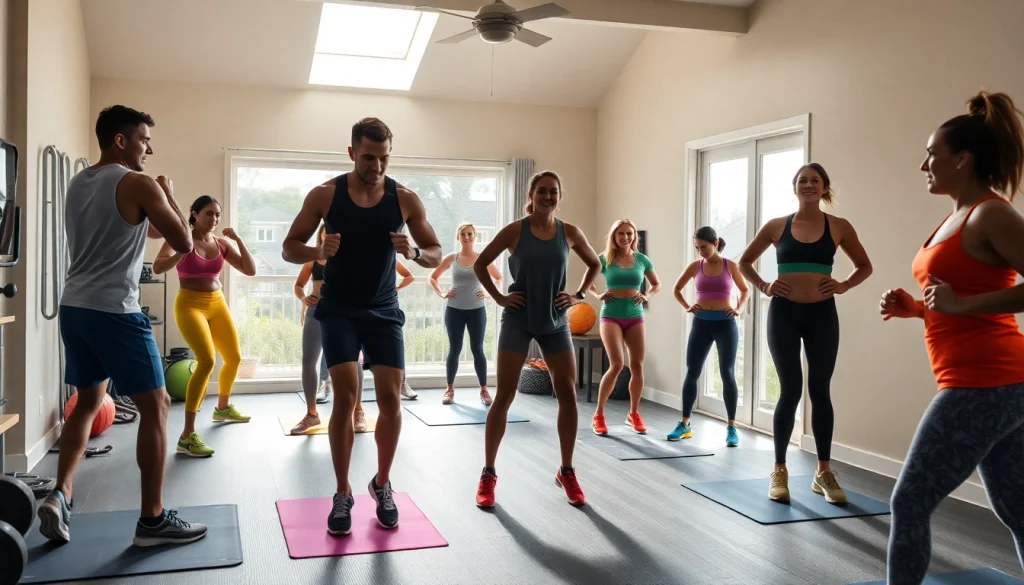Understanding the Basics of a Workout
Defining What a Workout Is
At its core, a workout is a structured session of physical activity designed to improve fitness, strength, and overall health. It can encompass various exercises, ranging from strength training to cardiovascular activities. The key components of any workout include the type of exercise performed, the duration, and the intensity level. Essentially, a workout can be anything from a high-intensity interval training (HIIT) session to a simple walk around the block, tailored to individual preferences and fitness goals.
The Importance of Warm-Up and Cool Down
Warm-ups and cool-downs are critical aspects of any workout, often overlooked by beginners. A proper warm-up prepares the body for exercise by increasing blood flow to the muscles, enhancing flexibility, and reducing the risk of injury. Techniques can include a few minutes of light cardio, dynamic stretching, or mobility exercises that gradually elevate heart rate.
Cooling down, on the other hand, allows the heart rate to gradually return to its resting state and prevents blood pooling in the extremities. This can involve static stretching, breathing exercises, or gentle walking, which helps in muscle recovery, reduces soreness, and aids overall flexibility.
Setting Realistic Workout Goals
Setting realistic and achievable goals is paramount for maintaining motivation and tracking progress. Goals should follow the SMART criteria—Specific, Measurable, Achievable, Relevant, and Time-bound. For example, rather than saying, “I want to lose weight,” one might set a goal to “lose 5 pounds in 2 months by exercising three times a week and maintaining a balanced diet.” This clarity ensures accountability and provides a roadmap for the workout journey.
Choosing the Right Type of Workout
Strength Training vs. Cardio Workouts
When deciding on a workout regimen, individuals often debate the merits of strength training versus cardiovascular exercises. Strength training involves resistance exercises that target specific muscle groups to improve muscle mass and strength. It is crucial for building a strong foundation, enhancing metabolic rates, and improving bone density.
Conversely, cardiovascular workouts, such as running, cycling, or swimming, focus on improving the efficiency of the heart and lungs, as well as burning calories. Incorporating both types into a workout routine can maximize fitness results and cater to various health goals, such as weight loss, muscle gain, or endurance improvement. Understanding your fitness goals will dictate the balance between these two powerful workout modalities.
Home Workouts vs. Gym Sessions
The decision between home workouts and gym sessions largely depends on personal preferences, accessibility, and lifestyle. Home workouts are convenient, allowing for flexibility in scheduling and eliminating the need for travel. With the rise of digital platforms, there are countless resources such as online classes or fitness apps offering guided sessions suitable for all levels.
On the other hand, gym sessions provide access to specialized equipment, challenging environments, and the opportunity for social interaction and support, which can enhance motivation. Each option comes with unique benefits and potential drawbacks; thus, individuals must consider what environment best supports their fitness journey.
Incorporating Flexibility and Recovery
Flexibility and recovery should be integral components of any workout plan. Flexibility exercises, typically in the form of stretching, enhance the range of motion, decrease the risk of injury, and improve overall performance. They can be implemented during warm-ups and cool-downs or as dedicated sessions in one’s training schedule.
Recovery, often overlooked, plays a significant role in maximizing workout effectiveness. Adequate rest days, proper hydration, and incorporating practices such as yoga or foam rolling can help alleviate muscle tension, boost performance, and restore energy levels. Emphasizing these aspects fosters a healthier workout routine and paves the way for more sustained progress.
Creating Your Personalized Workout Plan
Assessing Your Fitness Level
Before crafting a personalized workout plan, it is essential to assess your current fitness level. This evaluation involves recognizing current strengths, weaknesses, and any limitations. Tools such as fitness assessments, body measurements, and endurance tests can provide valuable insights into where to start. By understanding your baseline, you can design a plan that is both challenging and attainable.
Structuring Your Weekly Workout Schedule
Creating a well-structured weekly workout schedule is crucial for ensuring balance among various types of training while allowing for necessary recovery. A typical week might include strength training sessions, cardio workouts, and flexibility or recovery days. For instance, one might aim for two days of strength training focused on upper and lower body, two days of moderate cardio, and one day dedicated purely to active recovery, such as yoga or light walking.
It’s essential to remember that consistency is key, and building a routine that fits seamlessly into your lifestyle will yield the best results. Start with smaller commitments and gradually increase intensity and duration to avoid burnout.
Tracking Your Progress and Adjustments
Tracking progress is vital for motivation and ensuring the workout plan is effective. Various methods can be employed, from fitness apps that record workouts, to journals where you document changes in strength, endurance, and body measurements. Regularly assessing progress allows for adjustments to be made to the workout routine, ensuring it remains challenging and aligned with evolving fitness goals.
In addition to physical metrics, consider tracking how your workouts make you feel—both psychologically and physically. Adjustments could include changing exercises to avoid plateaus or modifying training intensity as endurance improves.
Common Workout Mistakes to Avoid
Overtraining and Its Effects
One of the most common pitfalls in fitness is the tendency to overtrain. While dedication is admirable, failing to recognize when to rest can derail progress and lead to burnout or injury. Signs of overtraining can include fatigue, decreased performance, increased susceptibility to illnesses, and persistent muscle soreness.
To combat overtraining, ensure to schedule rest days and incorporate lighter workout days into your plan. Listening to your body and understanding the difference between discomfort and pain is crucial in maintaining long-term fitness and health.
Ignoring Nutrition in Your Workout Routine
Nutrition plays a pivotal role in enhancing workout performance and aiding recovery. It’s a common misconception that exercise alone can lead to desirable fitness results. Without the right fuel, workouts can become ineffective, and recovery may be prolonged.
Focusing on a balanced diet rich in whole foods, including proteins, healthy fats, and a variety of fruits and vegetables, can help optimize workout performance. Hydration also cannot be neglected; drinking adequate water before, during, and after physical activity is essential for peak performance.
Neglecting Proper Form and Technique
Many workout enthusiasts fall into the trap of prioritizing quantity over quality, often sacrificing form in pursuit of higher repetitions or heavier weights. This neglect can lead to injuries and ineffective workouts. It’s essential to focus on the mechanics of each exercise to ensure proper engagement of muscles and joint safety.
Consider seeking guidance from trained professionals or utilizing instructional videos to ensure that you are performing exercises correctly. Prioritizing flawless form will maximize results and minimize the risk of injury over time.
Advanced Workout Techniques for Enhanced Results
High-Intensity Interval Training (HIIT)
High-Intensity Interval Training (HIIT) has gained popularity for its efficiency and effectiveness in burning calories and promoting cardiovascular health. HIIT involves alternating between short bursts of intense exercise and recovery periods, leading to significant improvements in both aerobic and anaerobic fitness.
This training method can be adapted for various fitness levels and can include exercises like sprinting, cycling, or bodyweight exercises such as burpees and mountain climbers. Including HIIT in a workout routine not only saves time but also keeps workouts engaging and challenging.
Supersets and Circuit Training
Supersets and circuit training are advanced techniques that can enhance workout efficiency and effectiveness. Supersets involve performing two exercises back-to-back with minimal rest, targeting either the same muscle group (for muscle fatigue) or opposing muscle groups (for efficiency). This can maximize muscle engagement while saving time.
Circuit training, on the other hand, consists of multiple exercises performed consecutively with little to no rest in between. This format boosts cardiovascular fitness while providing strength training benefits. Both methods can lead to improved endurance, muscle toning, and enhanced metabolic rates, making them great options for those looking to take their workouts to the next level.
Utilizing Technology and Apps for Workouts
In today’s digital age, technology plays a crucial role in fitness. From fitness trackers to smartphones, a plethora of apps can help individuals structure workouts, track progress, and provide motivation. Many apps offer guided workouts, meal planning, and access to virtual trainers that can personalize routines based on individual needs and goals.
Beyond convenience, technology allows users to connect with communities for support and accountability, further assisting in motivating individuals on their fitness journeys. Whether it’s following live classes, participating in challenges, or using calorie tracking tools, integrating technology can greatly enhance workout experiences.


